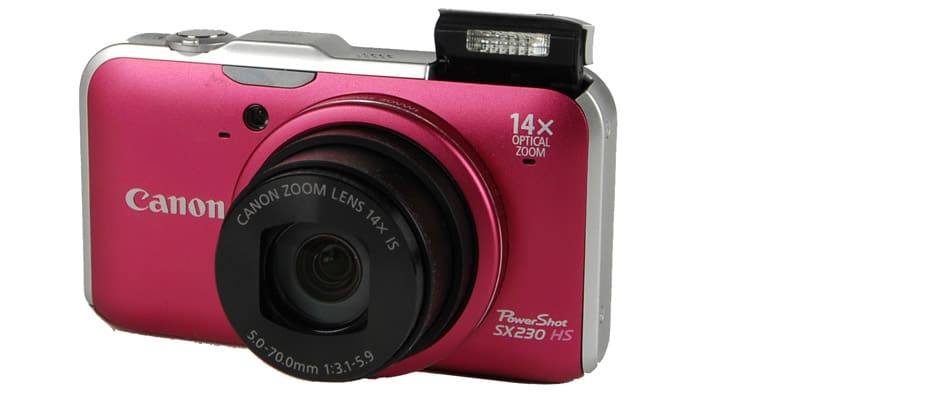Introduction
The SX230 has a suggested retail price of $349 and it is available in black, red, or blue.
Design & Appearance
{{section_header}}{{section.name}}{{/section_header}}
The SX230 is compact enough to slip in and out of your pocket with relative ease, but there are definitely smaller cameras out there. Most of them, however, don't have the kind of features or specs that the SX230 is capable of delivering. The camera also feels durable in your hand, which is certainly one of the benefits of a heavier and slightly bulkier camera.
Whether you consider the SX230 to be "stylish" is based on your personal preference. We wouldn't go so far as calling it the hippest camera we've ever seen, but it does have an elegant design that also looks casual and simple. We love the way the flash pops up out of the corner of the camera, and the large LCD is a pleasure to work with. The buttons on the right side are a bit cramped, and the directional pad doesn't always respond with the best accuracy, but those are the only complaints we have at this time.
The SX230 is available in fun red and blue colors, or you can get it with a standard black paint job. Photos of both the red and black model are sprinkled throughout this review.
Tour
{{section_header}}{{section.name}}{{/section_header}}




Ease of Use
{{section_header}}{{section.name}}{{/section_header}}
Because the SX230 has so many controls and options the camera can be a bit difficult to use. Its buttons on the back are a bit cramped and the menu, while organized efficiently, is large and complex. You can, of course, use the SX230 in an entirely automated manner by putting the mode dial into auto mode. This works well for the most part, and the camera feels like a basic point-and-shoot device when done so.
Switching to other modes, however, you start to see how many more features the camera has than the competition. There's a lot of manual modes, multiple movie modes, many effects options, and numerous settings to play around with. You need to either be an experienced user, or a dedicated instruction manual reader in order to gather all the ins and outs of the SX230.
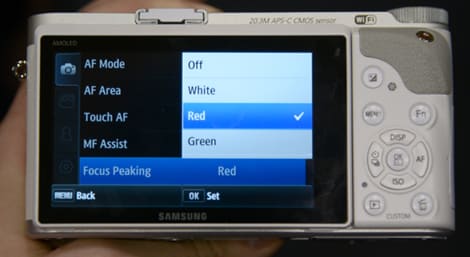
The main menu on the SX230 is stylish and easy to read. Even with the text in Japanese (as it is in the photo below), you can see how well organized this main menu is on the camera. There's also a function menu that is used to adjust controls on the fly, and this is where things get a bit more complicated. The function menu occasionally relies on icons or abbreviations that may be unclear to a first-time user, but should become recognizable after spending some time with the camera. Either way, we give the menus on the SX230 a pass for now.

Size & Handling
{{section_header}}{{section.name}}{{/section_header}}
The SX230 weighs roughly half a pound (223g) if you include the weight of the battery and a memory card. This makes it heavier than most of the compact cameras that are hitting the market these days, but it is still light enough to rest in your pocket without discomfort. There isn't much of a contoured grip to the SX230, and that makes the camera a bit difficult to grasp tightly at times (you can always attach a wrist strap if this concerns you).
The dimensions of the camera are 105.7 x 61.6 x 33.2mm (4.16 x 2.42 x 1.31 inches). This means the camera is fairly thin, but it is also kind of long. Much of the camera's length is due to its 3-inch LCD that takes up roughly 80% of the back of the camera. The only way Canon could have made the SX230 smaller would have been to incorporate a touchscreen LCD instead of including a set of dedicated buttons to the right of the screen. We don't mind the extra size, though. And for anyone who hates using a touchscreen interface, the dedicated buttons are surely helpful.
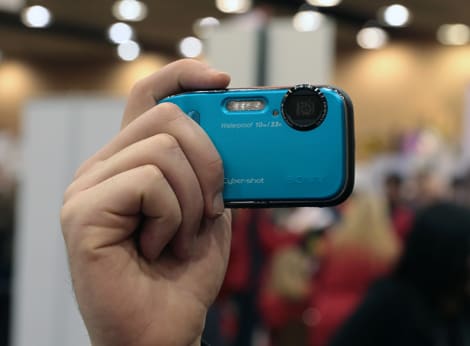
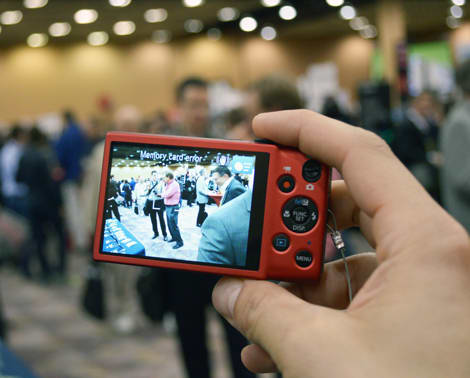
Auto Mode
{{section_header}}{{section.name}}{{/section_header}}
Auto mode on the SX230 is a great place to start with the camera. With everything controlled automatically the camera runs rather well and you can focus on framing your images to your ideal standard. We found the camera's autofocus to work quickly and the auto exposure metered things properly for the most part. The flash popped-up on occasion when the camera determined it was needed, but we couldn't get a good feel as to how well it provided an exposure boost. Once you're ready to move beyond basic auto mode you start getting into the meat of the SX230. After all, this is a fairly advanced camera for its size, so using it entirely in auto mode is a bit of a waste. The SX230 has a lot more modes and features to explore.
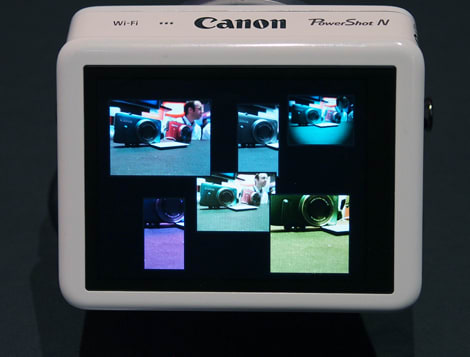
Movie Mode
{{section_header}}{{section.name}}{{/section_header}}
One of the features that sets the SX230 apart is its plethora of movie modes and options. The camera can shoot Full HD video (at a 1920 x 1080 resolution) using a 24p frame rate, or you can shoot 720p HD video with a 30p frame rate. There's also two standard definition recording modes, an option for slow motion recording, and a "miniature effect" video mode. The SX230 can record using regular H.264 compression, or it can use the iFrame compression system that is meant for compatibility with Apple's iMovie software.
In addition to these regular movie modes, the SX230 is also outfitted with a Movie Digest feature. This feature will record a short video clip every time you shoot a still image. Then, after you've collected a bunch of these little clips (each is around four seconds in length) you can combine them into a single video. You don't have to do any editing or organizing of the clips—Movie Digest does all the combining of clips automatically.
Custom Image Presets
{{section_header}}{{section.name}}{{/section_header}}
Scene modes on the SX230 include Handheld Night Scene, Low Light, Beach, Underwater, Foliage, Snow, Fireworks, and Stitch Assist. You can select these modes manually, or you can have the camera select the best option automatically in auto mode.
Drive/Burst Mode
{{section_header}}{{section.name}}{{/section_header}}
If you put the camera into its high-speed burst mode you can shoot 8.1 shots per second. You can also shoot continuously in regular mode (P Mode), but the speed is limited to 3.2 shots per second.
There is a 10-second and a 2-second self-timer on the SX230, but the cooler features are the camera's face self-timer and wink self-timer. We can't give an accurate review of how well these features work, but the idea behind them sure is neat. Having the camera snap a photo when a person winks or when a new face is detected in the frame avoids the complication of having to rush back into the frame before the 10-second timer is up.
Manual Controls
{{section_header}}{{section.name}}{{/section_header}}
Manual controls is the area where the SX230 strives. It has more adjustment options than most cameras of its size, and Canon does a decent job at making these controls accessible to beginners and experts alike. The camera offers manual adjustment of focus, ISO, aperture, shutter speed, white balance, and exposure. Additionally, there are a ton of color controls, picture effects, movie modes, and photo size options on the camera. The presence of these modes and features make the SX230 a good camera to branch out and learn with.

Focus
{{section_header}}{{section.name}}{{/section_header}}
The autofocus on the SX230 worked quickly and efficiently, but certain shooting situations may call for manual focus adjustment. We aren't crazy about the way you adjust focus manually with the camera, as it requires you to use the directional buttons on the back of the camera (rather than a lens ring or dial), but the option is there if you need it. We suggest sticking with autofocus if you can.
ISO
{{section_header}}{{section.name}}{{/section_header}}
ISO can be set manually on the SX230, but the range of controls isn't very large. You can set the ISO to 100, 200, 400, 800, 1600, 3200, or auto.
Aperture & Shutter Speed
{{section_header}}{{section.name}}{{/section_header}}
The maximum aperture on the camera is f/3.1 with the lens zoomed out to its widest angle. Zooming in to the full 14x optical the aperture becomes f/5.9. You can adjust the aperture manually in the camera's full manual mode (M) or the aperture priority setting (Av). The smallest aperture available is f/8.
The same rule applies to shutter speed, which can be set manually in the full manual mode or shutter-priority setting (Tv). Manually, the shutter speed can be set from 15 seconds to 1/3200 of a second. The camera does not appear to have a bulb option.
White Balance
{{section_header}}{{section.name}}{{/section_header}}
White balance presets on the camera include: Day Light, Cloudy, Tungsten, Fluorescent, Fluorescent H, and Underwater. There's also an auto white balance mode and a custom white balance setting that allows you to manually set the white balance.
Exposure & Metering
{{section_header}}{{section.name}}{{/section_header}}
Basic exposure compensation can be set on the SX230 HS in a range from -2 to +2 in 1/3 EV increments. You can also turn on features like i-Contrast, Program Shift, Safety Shift, and the auto exposure lock if you want to control exposure in other ways. The metering modes on the camera include evaluative, center-weighted average, and center-spot.
Image Stabilization
{{section_header}}{{section.name}}{{/section_header}}
The SX230 has built-in optical image stabilization as well as a dynamic IS mode for further image stabilization options.
Picture Quality & Size Options
{{section_header}}{{section.name}}{{/section_header}}
The camera has plenty of size options to choose from, with the largest being the 4000 x 3000 (12 megapixel setting). The smallest photo size option is a 480 x 480 mode and there are about ten other size options in between. Aspect ratios available on the SX230 include 16:9, 3:2, 4:3, and 1:1. There's also two quality options—Normal and Fine—and all still images are taken in the JPEG format.
Picture Effects
{{section_header}}{{section.name}}{{/section_header}}
Many cameras include cheesy picture effects, and the SX230 certainly has its share. Some of them are fun to play around with, though, but the majority are effects that can be recreated in post production with a basic editing program. Effects include: Fish-eye, Miniature Effect, Toy Camera Effect, Monochrome, Super Vivid, Poster Effect, Color Accent, and Color Swap.
The camera also has a bunch of photo effects that allow you to adjust color depth, skin tones, contrast, and sharpness. These things can be useful for adjusting on the fly, but, again, they can all be manipulated using editing software after the photo is taken as well.
Other Controls
{{section_header}}{{section.name}}{{/section_header}}
One of the SX230's big new features is its built-in GPS tracker (it's Canon's first PowerShot camera to be equipped with this feature). GPS tracking for digital photos can be fun, particularly if you're traveling in a city and you want to be able to organize your photos by location, but it is also a feature that many users are likely to neglect or care little about. We're not saying the GPS isn't useful, it's just something that may only appeal to select individuals.
The camera comes with a mapping utility that you can install on your computer in order to better utilize the GPS feature. Photos are displayed by location on the map, and you can even create a little route to track where you went during your trip (based on where you snapped photos).
LCD
{{section_header}}{{section.name}}{{/section_header}}
The large, 3-inch LCD on the back of the SX230 is good, but there are definitely better screens out there. The LCD has a resolution of 461,000 pixels, which is only around half the resolution of the 3-inch screen on the Nikon S9100. There are also a number of digital cameras, like the Panasonic Lumix DMC-ZS10, that have larger screens that utilize touchscreen interfaces. We'd feel better about the inferior screen on the SX230 if the camera included a viewfinder, but, alas, it does not.

Flash
{{section_header}}{{section.name}}{{/section_header}}
The built-in flash, which pops up on the left side of the camera, is well hidden when it is tucked away. The flash has a range of 2.5 - 11.5 feet depending on the zoom ratio used, and its exposure compensation is ±2 stops in 1/3 stop increments. You can set the flash to use red-eye reduction, one of three manual levels, or slow synchro.

Lens & Sensor
{{section_header}}{{section.name}}{{/section_header}}
The built-in lens for the camera has a focal length of 5 - 70mm (28 - 392mm in 35mm equivalent) and a focusing range of 5cm to infinity. There's also a macro focus setting that changes the focus range to 5 - 50cm. The lens has a 14x optical zoom.
The sensor on the SX230 is a 1/2.3-inch CMOS that has a total pixel count of 12.8 megapixels. The effective pixel count is just a tiny bit smaller, coming in at 12.1 megapixels.

Jacks, Ports & Plugs
{{section_header}}{{section.name}}{{/section_header}}
There's one little port cover on the camera's right side. In it, you'll find an HDMI output and a USB port that also doubles as an AV-out jack. The battery compartment and memory card slot are both located on the bottom of the camera.
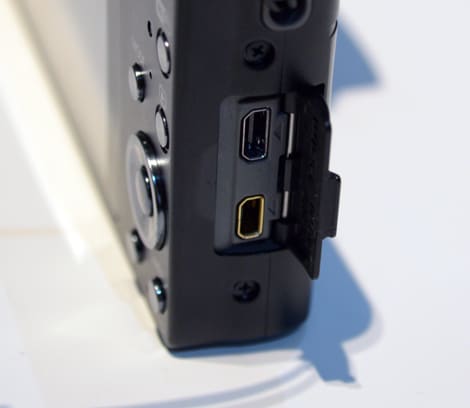
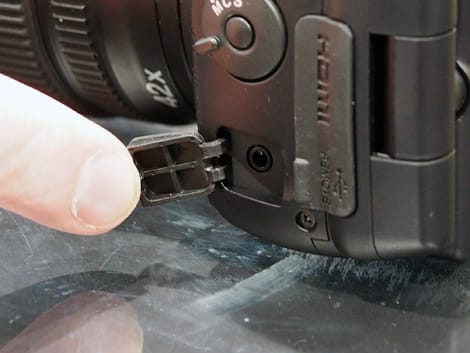
Battery
{{section_header}}{{section.name}}{{/section_header}}
The camera comes with the NB-5L battery pack and the CB-2LX battery charger. According to Canon, a fully charged battery should allow for approximately 210 shots with the SX230 (or 4 hours of use).

Memory
{{section_header}}{{section.name}}{{/section_header}}
SD, SDHC, or SDXC memory cards may be used with the Canon SX230 camera. The card slot is located on the bottom, inside the same compartment as the battery pack.
{{product.manufacturer_specs['FI Memory Photo']}}
Conclusion
The PowerShot SX230 HS has more controls and features than its small frame suggests, but, at this point, we have no idea if it has the performance to match its enticing specs. With our first look at the camera, we came away impressed by the Full HD movie mode, the extensive set of manual controls, and the large amount of photo size and aspect ratio options. These features, along with Canon's new GPS feature that works in conjunction with Google Maps, aren't quite enough to make Canon's rabid fan base to begin salivating, but they are striking nonetheless.
If the SX230 can back up its lofty set of features with a blue-ribbon performance in our image testing, then the camera may come away as one of the better point-and-shoot models of 2011. However, if the performance is lacking on the SX230, the camera is likely to get lost in the shuffle against some stiff competition. The Nikon S9100 and the Panasonic DMC-ZS10 are both in the SX230's price range (around $350), and they too have plenty of exciting features and specs. Performance will likely be the factor that sets these models apart, so we're itching to pit them head-to-head in our testing labs later this year.
Sample Photos
{{section_header}}{{section.name}}{{/section_header}}
Specs
{{manufacturer_specs_table}}
Meet the tester
Jeremy is the video expert of our imaging team and Reviewed.com's head of video production. Originally from Pennsylvania and upstate NY, he graduated from Bard college with a degree in film and electronic media. He has been living and working in New England since 2005.
Checking our work.
Our team is here to help you buy the best stuff and love what you own. Our writers, editors, and experts obsess over the products we cover to make sure you're confident and satisfied. Have a different opinion about something we recommend? Email us and we'll compare notes.
Shoot us an email